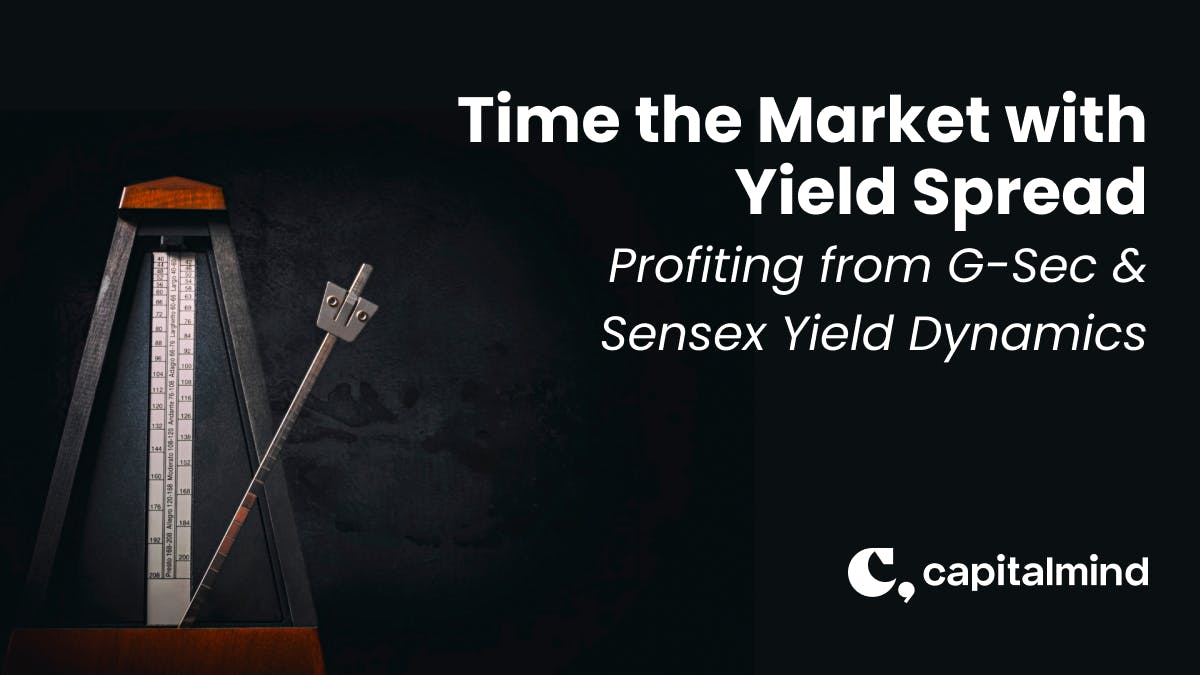(category)Foundations
How to think about Asset Allocation in India – Part 2How to think about Asset Allocation in India – Part 2
Anoop Vijaykumar•

Part 1 of this two-part Asset Allocation post used a simple equal-allocation strategy over four available assets to make the case for asset allocation as a critical part of the investment process. Not just for lower downside volatility, but for better annualised returns as well.
In Part 2 we examine how different combinations of assets would have done over the same 30 year period in terms of returns and downside volatility. What combination is most feasible for most investors. And what next after Asset Allocation?
First, an important distinction between Asset Allocation and Security Selection.
What Asset Allocation is not
Part 1 got a bit of discussion going. A lot of questions were of the type "what do the results look like if you considered x-security instead of y-security in the analysis?"
That train of thought is endless. What if we held the NIFTY equal-weighted? Or held Midcaps as well? Or bought physical gold? Or...
You can spreadsheet yourself into paralysis before deploying your first ₹
So this graphic below broadly summarising the drivers of investment performance.
The three key distinct but inter-related elements of portfolio performance :
1. Asset Allocation: What assets to own and how much?
2. Security Selection: Within each asset class what securities to hold?
3. Market Timing: How much of any given asset and security, and when to exit and when to stay invested?
Each element is dependent on the one below it to work well. The size of the bars tries to communicate their relative importance in the investment management process.
You could technically do no asset allocation, no security selection, and make a fortune by moving 100% of your net worth going long and short on NIFTY Futures. That strategy has a place for the active investor who knows what she's doing. Just that it needs to be an appropriate part of your portfolio for it to be not just a game of Russian Roulette.
When we pick the benchmark total return index as proxy for domestic equities, it is tempting to think of potential incremental results from active portfolio strategies. Or to consider other assets that are available today, and to backfill data based on a proxy to see the impact on portfolio results. Those approaches present two challenges:
- Using proxies for assets going back in the past can be tempting, but they ignore the confounding effect on other assets and their own price. e.g. If India had liquid real estate proxies (like REITs) 20 years ago, would the real estate sector look the way it does today? Think about it for a minute. Would prices be as they are today? Where would the unaccounted wealth go? This means, the imaginary asset, by existing, would have behaved differently from the proxy we use, invalidating our analysis
- Using active management strategies (like the best-performing active mutual fund returns) would not make clear whether the asset's performance was a result of brilliant stock-picking or the asset itself
Before wondering whether GSecs or Gilts make more sense as part of the Debt portfolio, we are questioning why Debt and how much?
We do this by picking the most conservative instrument representing the asset. That and where data is relatively easily available.
And yes, the analysis in this two-part post doesn't try to be "academically comprehensive" but to be realistic and actionable.
All that aside, every "model" inherits the shortcomings and biases of its maker. I have thought of Real Estate as opaque and inaccessible for too long to now believe it is a viable asset-class for the regular investor. If you have a deeper understanding of the space and have conviction, then it should be part of your asset allocation. It just won't figure in mine.
Searching for the "Ideal" Asset Allocation
The Ideal Asset Allocation maximises returns year after year with no downside volatility.
Such a thing does not exist, except in hindsight.
A realistically ideal Asset Allocation minimises regret. And regret is investor-specific. On how much downside you can tolerate while maximising return.
Geoffrey Boycott (the English opening batsman-turned-commentator) once said "A bowler's objective should be to bowl the shortest possible length while bringing the batsman forward to drive". So much bowling wisdom in such a short statement. That it is not about hitting a specific length on the pitch, but to hit a specific length with respect to the batsman.
I'll mangle it a little for investors. "An investor's objective should be to allocate the minimum possible to risky assets while meeting his (her) required annual return over the long-term"
[bctt tweet="An investor's objective should be to allocate the minimum possible to risky assets while meeting his (her) required annual return over the long-term." username="capitalmind_in"]
Hypothetical Investor Profiles
We'll look at six distinct allocation profiles and their outcomes, both in terms of annualised returns and the downside experienced.

The profile names are meant to intuitively convey underlying weights. I've kept loaded descriptors like "Aggressive" / "Conservative" / "Defensive" out of this because they wrongly imply personality-traits. I get the feeling the "Safety-First" descriptor will get fewer takers for that very reason.
There are two exotic profiles: Goldfinger (allocates 50% to Gold), and Stars & Stripes, that does the same with US Equities (N100).
The others, Token, Textbook, Safety-First, and Equal, have more conservative allocations featuring Debt in addition to Gold and US Equities.
Before reading further, pick the profile that comes closest to how you believe you'd like to allocate. Note this is for till the time you're accumulating and not consuming from your portfolio.
How the investor profiles performed
 Even on a log-scale this chart is not very useful except to show relative ranks of the six profiles. We'll unpack the results by looking at them a few different ways.
Even on a log-scale this chart is not very useful except to show relative ranks of the six profiles. We'll unpack the results by looking at them a few different ways.
The two "exotic" profiles that allocate significantly to N100 and Gold respectively in addition to the NIFTY outperform the rest. Of the rest, the Equal Allocation Strategy we examined in Part 1 is the 2nd worst performer, ranking higher than only the 'Safety-First' allocation that stays 50% in safe debt at all times.
Textbook and Token allocations outperform the NIFTY.
Remember, Gold and N100 only came in 2007 and 2011 respectively. Until then, the respective portfolios track the NIFTY.
How do they do in terms of Drawdowns?
Again the chart is too busy to be of help except to see how the portfolios stack up in June 2020 in terms of drawdown from peak value. The NIFTY is the worst performer while the best performer is the Equal-Allocation portfolio followed by Goldfinger.
A better representation of the portfolios susceptible to the worst drawdowns is this chart
Chart shows which allocation shows the worst drawdown in corrections. The predominance of grey means the NIFTY-only portfolio sees the worst drawdowns and the almost complete absence of green means those drawdowns are not as bad when you combine the NIFTY with other assets.
The flipped view shows the portfolios that declined the least in times of drawdowns. The best of the worst so to speak. The most prominent greens are predictably Safety-First and Equal-Weight Portfolios. Interestingly, the Textbook portfolio does not feature on either chart, meaning it is never the best, nor the worst performer in bad times.
Summarising portfolio performance
Table shows results of the 6 allocation strategies and the NIFTY-only strategy order by overall return from 1990 to 2020.
The NIFTY is bang in the middle of the pack. Textbook, Token, and Equal Allocation have returns clustered around the NIFTY. This is a big deal because you're getting NIFTY-like returns without being completely invested in it.
The strategies that take significant exposure to one other asset outperform the others with more diversification. That does not make them ideal allocation strategies. Here's why.
Table compares volatility of those same strategies.
And maximum drawdowns from peak
The NIFTY does the worst on both volatility and maximum drawdowns. At the same time, it is middle of the pack in terms of returns delivered over 30 years.
Think back to the Modern Portfolio Theory graphic in Part 1.
This means by investing ONLY in domestic equities (NIFTY):
you are taking too much risk for your return OR
not getting enough return for your risk.
i.e. A NIFTY-only strategy can be improved by combining it with a mix of debt, gold and international equities.
Specifically, "Textbook" allocation (NIFTY: 50, Debt: 20, Gold: 10, N100: 20) delivers marginally higher return (14.7% vs 14.4%) with significantly lower volatility (19.3% vs 25.7%). The Equal allocation strategy almost matches the NIFTY with less than half the volatility. Comparing drawdowns leads us to a similar conclusion.
Table shows returns by calendar year.
If you picked one of the profiles at the start, then look at the annual returns, the up and down years and compare them against the NIFTY. Which sequence of returns would minimise regret for you?
It might be tempting to say "Safety-First" or "Equal" but what happens at the end of 2017 when the market is up 30% and you're only about 2/3rd of that? That's regret. The point of looking at the past is not for prediction but to simulate scenarios, imagine yourself in them, and be honest about how you would likely react.
Here's another way to summarise returns over the last 15 years.
 Notice how 10 year returns of the NIFTY-only and Safety-First strategy are identical. How every other strategy outperforms the NIFTY going back up to 10 years. And how even the Token allocation strategy, which only allocated 10% each to Debt, Gold and N100 still outperformed the NIFTY with lower volatility.
Notice how 10 year returns of the NIFTY-only and Safety-First strategy are identical. How every other strategy outperforms the NIFTY going back up to 10 years. And how even the Token allocation strategy, which only allocated 10% each to Debt, Gold and N100 still outperformed the NIFTY with lower volatility.
But also keep in mind how as the timeframe increases, the NIFTY-only strategy closes the gap with the other strategies. Just that it does it with with the drama of sharper drawdowns.
The "best" Allocation Strategy?
The best allocation strategy is the one where you don't fire yourself as your investment manager.
"Nobody ever got fired for buying IBM"[link]. This was a catchphrase in the 1970s when IT departments had to make large purchases and buying IBM made sense not because they were the best, but because they were so large and ubiquitous that no risk-averse IT Head could be faulted for buying IBM.
The equivalent "can't get fired" asset allocation plan is between 'Safety-First' and 'Textbook'. No Financial Advisor will be faulted for recommending one of those.
But most salaried employees in India have significant Debt exposure in the form of Employee Provident Fund (EPF). Add to that PPF and FDs and they're likely over-allocated to Debt unless they are coming up on retirement and need replacement income.
If I had 15+ years of predictable income before retiring, I would look for a healthy mix of Textbook with Stars and Stripes. i.e. Textbook with lower debt and higher exposure to US Equities.
Asset Allocation ✔️. Now what?
Two questions and variations of those make up most of all financial markets chatter: "Aaj market kya lagta hai?" or "<insert sector> Companies should be good bet for the long-term given China blah blah?"
Refer to the Investment Performance pyramid (redrawn here with an addition).
Investors spend inordinate amounts of time obsessing about a 15% up or down move in a stock they own, that makes up a grand total of 0.5% of their net worth. A fraction of that time gets spent on deciding the more fundamental "how much in equities and in this portfolio?" question.
[bctt tweet="Investors spend time obsessing about a 15% move in a stock that makes up a grand total of 0.5% of their net worth. A fraction of that time gets spent on deciding the more fundamental: How much in equities and in this portfolio? question." username="capitalmind_in"]
Hence, the additional text in red.
If you're a non-finance professional who takes no joy in deep-diving into companies and investment strategies, then you should be done once you've decided your Asset Allocation. Incremental returns from actively picking a portfolio and making decisions about exits and re-entries are negative for most investors.
[bctt tweet="Incremental returns from actively picking a portfolio and making decisions about exits and re-entries are negative for most investors." username="capitalmind_in"]
Buy a combination1 of low-cost index funds (or ETFs) for equity exposure (Indian and International), any additional debt allocation not already covered by your EPF into a similar Debt instrument (Bharat Bond ETF or PSU & Banking Fund2), some Gold if you need to, through a Sovereign Gold Bond. Rebalance once a year. Spend time you save on things you enjoy.
If you absolutely feel like you have better insight into a narrow slice of the market, Lithium-Ion battery makers or such, then allocate a pre-defined portion of your equity allocation to such a portfolio. Or look at our model portfolios built around specific investment themes that aim to do better than the benchmark. I recommend allocating a meaningful portion to any active strategy so you have reason to track how it does and course correct.
Make sure to be objective when you evaluate the results of active security selection periodically relative to the passive allocation to see if it's worth the time and energy.
Does it have to be more complicated than that?
If you've scrolled down this far, thanks for reading :)
1 Our large-cap recommendation is a Market Index, a combination of three ETFs, rebalanced annually
2 Our Fixed Income portfolio is a combination of Debt Mutual Funds revisited monthly to check underlying debt profile
Ping us on slack with your feedback, and about what we missed or got wrong. And how you think about Asset Allocation.
If you're not a Premium Subscriber, upgrade today for full access to our research, portfolios and subscriber slack forum. Use Code CMPOFF10 to get 10% off regular price.
Related Posts
Make your money work as hard as you do.
Talk to a Capitalmind Client AdvisorInvesting is not one size fits all
Learn more about our distinct investment strategies and how they fit into your portfolio.
Learn more about our portfoliosUnlock your wealth potential
Start your journey today











